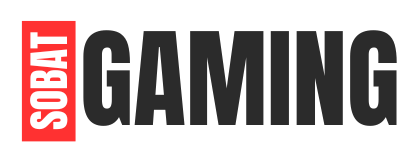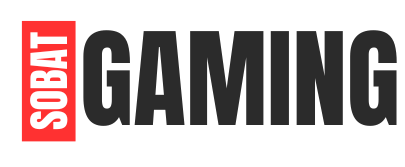It started when I was just 8 years old – the day my dad brought home our first computer and installed a simple car racing game. I was immediately hooked, spending hours each day racing pixelated vehicles around crude tracks. As the years went by, I upgraded to more advanced games and consoles – adventures, puzzles, RPGs, shooters. Gaming quickly became my obsession and passion.
By high school, I had dreams of somehow turning this hobby into a career. That’s when I discovered the world of competitive gaming and esports. I learned about professional teams and tournaments with huge cash prizes. Top players were earning six-figure salaries and gaining celebrity status. This was more than just a fantasy – people were getting paid to play video games!
But going pro wasn’t easy. It required tremendous dedication, skill, and practice. Over the next few years, I set my sights on reaching the highest tier of competition…
An Introduction to Competitive Gaming and Esports
Before we dive into my journey, let’s take a step back and look at the professional gaming industry as a whole.
A Brief History
Competitive gaming tournaments date back to the early 1990s and 2000s, with small local competitions for games like Spacewar! and Defender. But it wasn’t until the 90s that started to gain mainstream traction with the release of popular fighting, RTS, and first-person shooter games.
Some key events in early history:
- 1990 – Atari hosts the first nationwide Space Invaders tournament with over 10,000 participants.
- 1997 – The red Annihilation Quake tournament offers Ferrari as the grand prize.
- 2000 – First Counter-Strike and Warcraft 3 tournaments held.
- 2002 – Major League Gaming (MLG) was founded to organize Halo competitions.
As internet speeds increased and streaming technology improved, viewership skyrocketed in the 2000s. Tournaments emerged across multiple popular franchises like Starcraft, DOTA, League of Legends, and more.
Today, Is a major industry, with an estimated audience of 443 million people and revenues of over $1 billion annually. [1]
How Competition Works
Professional video game competitions function much like traditional sports leagues. Here’s a quick overview:
- Teams – Players form or join professional teams to train and compete together. Top teams include Cloud9, Team Liquid, TSM, and FaZe Clan.
- Leagues – Teams compete in structured leagues and tournaments organized by companies like ESL and Activision-Blizzard. Some leagues are franchise-based, while others hold open qualifier events.
- Tournaments – Major tournaments like The International, LCS, Evo, and Genesis offer prize pools in the millions from sponsorships and crowdfunding.
- Events – Live competitions held in stadiums and arenas with spectators.
- Games – Most popular esports titles are multiplayer battle arena, first-person shooter, fighting, digital collectible card, and real-time strategy games like League of Legends, Counter-Strike: Global Offensive, Super Smash Bros, Hearthstone, and Starcraft II.
Professional gamers in popular esports can earn salaries of hundreds of thousands each year from team contracts, tournament prizes, sponsorships, and streaming revenue. However, reaching the top level requires intense practice, skill development, and nonstop competition.
My Path to Going Pro
Now that you understand the basics of the esports industry let me tell you how I went from being a gaming enthusiast to a professional competitive player.
Developing Expertise
As a teen, I started taking gaming more seriously by researching top players, studying game strategy guides, and closely analyzing match replays. I identified my weaknesses and drilled the areas I needed to improve, like reaction times, accuracy, and situational awareness.
I also experimented with various game genres and titles to determine where I was most skilled and stood the best chance of excelling. After testing FPS, RTS, MOBA, and fighting games, I decided to focus on first-person hero shooter Tradble, which combined my sharp aim with knowledge of complex character abilities.
Here are the key ways I developed my Tradble expertise during those early years:
- Memorizing each hero’s abilities – Tradble has over 30 playable heroes, each with a unique movement style, primary/secondary fires, and 2-4 special abilities. Understanding every hero was crucial.
- Studying the meta – I analyzed the optimal team compositions, lane assignments, and ability combinations preferred by top players in each patch.
- Drilling mechanics – I spent hours in solo custom matches perfecting basics like aiming, dodging, skill shots, and reaction times.
- Reviewing my gameplay – I recorded matches to find weaknesses in my gameplay to focus on improving.
- Reading patch notes – I stayed up-to-date on all balancing changes and new heroes being added.
Gearing Up
Besides sharpening my in-game skills, I upgraded my gaming hardware to compete with the top players. Here is my setup:
- PC – High-end GPU (Nvidia GeForce RTX 3090), CPU (Intel Core i9-12900K), and at least 32GB of RAM
- Monitor – 240Hz refresh ratemonitor with 1ms response time
- Mouse – Esports gaming mouse (Razer Viper 8K) with high DPI and polling rate
- Keyboard – Mechanical gaming keyboard (HyperX Alloy Origins 60) with fast switches
- Headset – Premium headset with surround sound and a noise-cancelling mic
- Accessories – Large mousepad, gaming sleeve, and ergonomic chair
Having this elite gear ensured I could react instantly and take advantage of Tradble’s fast movement and abilities. The difference it made was night and day compared to average setups.
Competing and Gaining Exposure
Armed with expertise and the right gear, I started competing in online and local tournaments to make a name for myself. Here are some of my early competition highlights:
- Local LANs – I joined my school’s esports club and dominated our intramural Tradble tournaments, earning a reputation on campus.
- Online tournaments – I signed up for tournaments on ESL Play and other amateur competition platforms, getting experience in high-stakes matches.
- Ranked grind – I invested hours each season grinding the ranked ladder, hitting the Master tier to get on better teams’ radars.
- Highlight reels – I created montages of my best gameplay moments and shared them on Esports One and Reddit to build an audience.
These early wins earned me a loyal following and opportunities to join amateur teams. I took the time to build chemistry with new teammates and shine in larger tournaments.
Joining the Pros
My big break came at age 19 when I tried out and won a spot on a Tier 2 pro Tradble team called Velocity Gaming. This gave me a salary, coaching, and chances to play against elite talent.
Over the next two years on Velocity, I refined my teamwork, strategy, and mental composure during long tournaments. Eventually, my standout play as one of the team’s star DPS heroes earned me a tryout for the venerable Top 10-ranked organization Renegades.
After intense vetting and scrimmages, Renegades signed me to become their starting damage player. Almost overnight, I was competing for hundreds of thousands in prize money on the main stage with the best of the best.
Grinding as a Pro
Life as a pro gamer on Renegades was thrilling but extremely demanding. Here was a typical day:
| Time | Activity |
|---|---|
| 7:00 AM | Wake up and eat a healthy breakfast |
| 8:00 AM | Team replay review |
| 10:00 AM | Skirmish matches vs. other pros |
| Noon | Lunch and break |
| 1:00 PM | Position drills and mechanics practice |
| 3:00 PM | Strategy meeting with coaches |
| 5:00 PM | Scrimmage practice matches |
| 8:00 PM | Dinner and free time |
| 10:00 PM | Solo queue ranked matches |
| Midnight | Bedtime |
Our schedule was filled with match analysis, individual skills training, team practices, and late-night competitive grinding. I even had to maintain a top 500 ranking in Tradble’s solo queue to stay starter-worthy.
Being a pro also meant:
- Traveling frequently for tournaments, bootcamps, and events
- Scrutinized constantly by fans and analysts
- Dealing with immense pressure to perform
- Fighting burnout from the nonstop grind
But all the hard work paid off with some of my career highlights so far:
- Wins – I’ve helped Renegades win multiple major championships, including the Genesis Invitationals, Fortnite Winter Royale, and GameStop Homecoming LANs.
- MVPs – I’ve earned MVP awards for my dominant carries and plays like my legendary 5-man shatter as Reinhardt on Hanamura.
- Salary – As one of the top damage pros in Tradble, I’ve negotiated a salary well into six figures.
- Twitch – My popularity helped me build a substantial streaming brand with over 50,000 followers.
- Sponsors – Major brands like Red Bull, Nvidia, and Razer sponsor me.
While being a pro gamer isn’t always easy, I’m fortunate to have turned my passion into an exciting career playing at the highest level.
Keys to Going Pro
Based on my journey, here are the most crucial steps for going pro:
1. Commit to mastering a game – Choose one title to focus on and play extensively to build expertise.
2. Develop key skills – Work on mechanics like aim, reaction time, and executing combos. Study strategy and meta.
3. Get the best gear – Invest in a pro-level PC, display, peripherals, chair, etc., to maximize performance.
4. Enter competitions – Sign up for online and local tournaments to test skills against tough opponents.
5. Build a reputation – Generate buzz by dominating events, ranking high on ladders, and sharing highlights.
6. Join a team – Getting on an amateur team provides coaching, teamwork experience, and bigger tournaments.
7. Market your brand – Stream, post content, and represent sponsors once you go pro.
My story of going from gaming enthusiast to professional gamer shows that with passion and dedication, you can turn your biggest hobby into a career. Let me know if you have any other questions! I’m always happy to help new gamers try to go pro.



